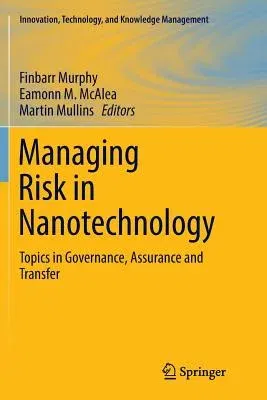This book aims to address how nanotechnology risks are being addressed
by scientists, particularly in the areas of human health and the
environment and how these risks can be measured in financial terms for
insurers and regulators. It provides a comprehensive overview of
nanotechnology risk measurement and risk transfer methods, including a
chapter outlining how Bayesian methods can be used. It also examines
nanotechnology from a legal perspective, both current and potential
future outcomes.
The global market for nanotechnology products was valued at $22.9
billion in 2013 and increased to about $26 billion in 2014. This market
is expected to reach about $64.2 billion by 2019, a compound annual
growth rate (CAGR) of 19.8% from 2014 to 2019. Despite the increasing
value of nanotechnologies and their widespread use, there is a
significant gap between the enthusiasm of scientists and nanotechnology
entrepreneurs working in the nanotechnology space and the
insurance/regulatory sector. Scientists are scarcely aware that
insurers/regulators have concerns about the potential for human and
environmental risk and insurers/regulators are not in a position to
access the potential risk. This book aims to bridge this gap by defining
the current challenges in nanotechnology across disciplines and
providing a number of risk management and assessment methodologies.
Featuring contributions from authors in areas such as regulation, law,
ethics, management, insurance and manufacturing, this volume provides an
interdisciplinary perspective that is of value to students, academics,
researchers, policy makers, practitioners and society in general.

